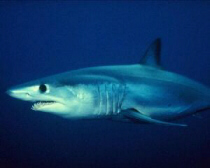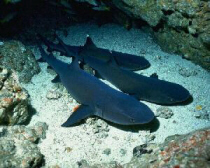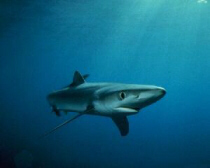|
There are about 450 kinds of Sharks, an about fifty of which present
in the Mediterranean, with dimensions that go from the only 24 cm of
the Pygmy Shark from the ribbon tail (Eridacnis radcliffei) to
the 18 meters of the Whale Shark (Rhincodon typus), that represents with
these measures also the greatest fish actually known.
(Complete sharks list)
The most ancient fossils of these animals go up to around 400 million
years, and the biologist thinks that their evolution has even already
arrived at the most level 100 million years ago.
The skeleton of the sharks is not bony, as that of the common fishes
but cartilaginous, formed by cartilage, similar to that that
constitutes the ear or the human trachea.
Contrarily of the common fishes, the sharks don't possess the swimming
bladder (an inside afloat body that can fill him with gas) whose
function of support to the floating is replaced partly from the big
liver, that can reach the 25% of the animal weight. Sharks are
predators and in their diet it can be present fish, smaller shark,
shellfish, mollusc and sea mammal.
The biologist knows three kinds of sharks that eat plankton, filtering
the water that enters from their jaws. They are the already quoted
Whale Shark (Rhincodon typus, up to 18 m.) Elephant Shark (Cetorhinus
maximus, up to 13 m.) and the Great mouth Shark (Megachasma pelagios,
up to 5 m.). Sharks form is generally tapered and hydrodynamic,
with the lengthened face and pointed, to favor the advancement in
water. Visit SHARK-MAP
and Shark anatomy
to know more.
|
|



|
![]()